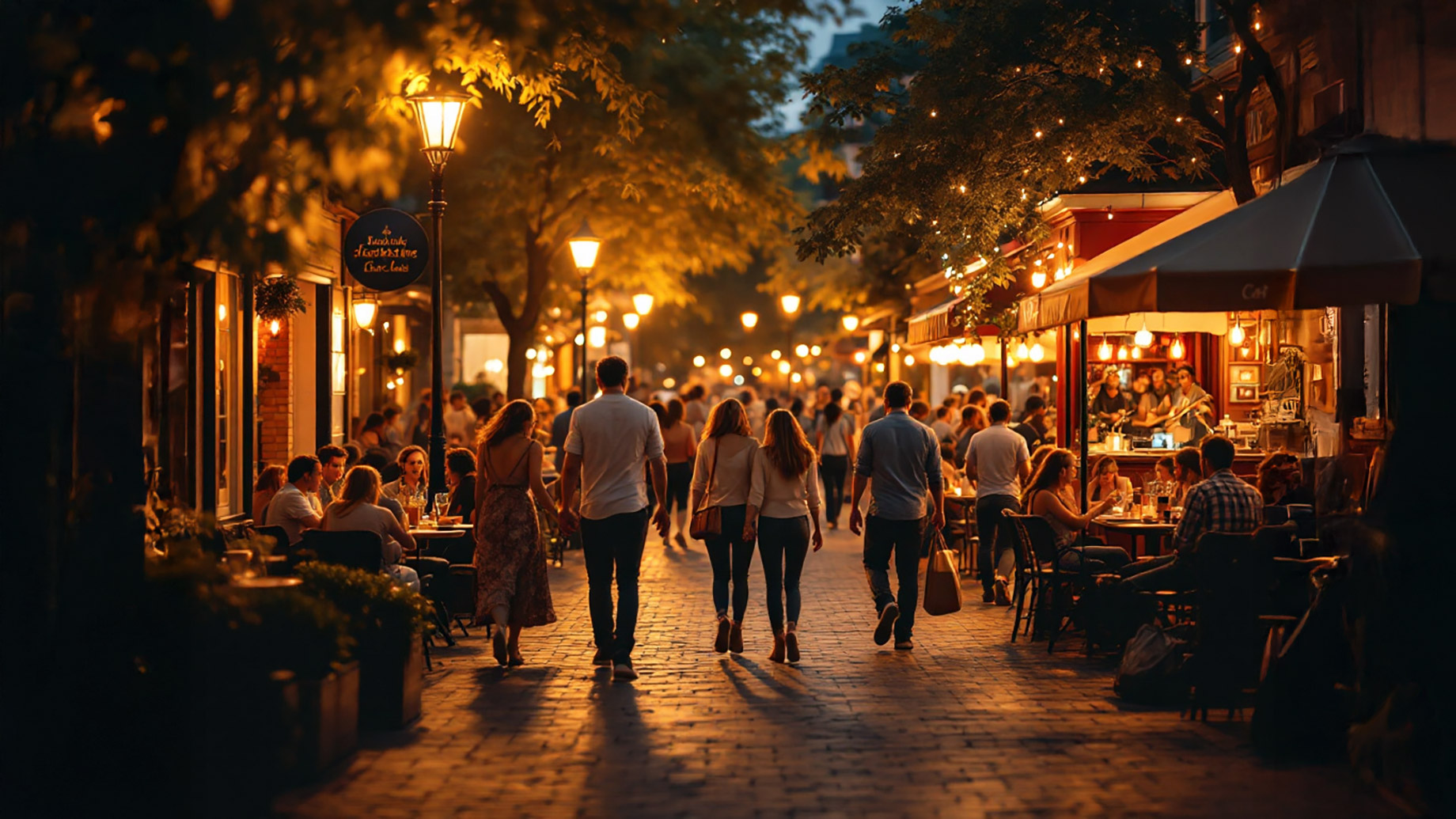
Imagine stepping outside your front door and walking to your favorite restaurant, shop, or grocery store without ever having to start your car. This is a reality for many people, and is one of the most coveted perks property owners use to market their rentals.
Living in a neighborhood with dining, shopping, and entertainment within walking distance is more than a lifestyle – it can enhance your health and help you build social connections. If you’re interested in moving and you’re considering a location like this, here’s a closer look at why walkable communities are ideal.
Deeper Social Connections
Living in a community with an active dining and shopping scene fosters community interaction and engagement. For example, the stylish new apartments at Casa Marti in Ybor City, Florida offer residents a premium location in an active Tampa community with stunning views of the historic district. Ybor City hosts plenty of community events, including festivals, free fitness classes, and food truck events.
Whether it’s local events hosted by local businesses or city-sponsored activities, walkable neighborhoods encourage meaningful social interactions and can even lead to business connections.
Convenience
Perhaps the number one reason to live in a walkable community is quick and easy access to shopping that would normally take hours. Depending on the location, it’s sometimes faster to walk to a local shop than to drive, find parking, and navigate sidewalks full of pedestrians.
If you just need to run a quick errand, you can’t beat the convenience. In addition to saving time, you’ll save gas and avoid the hassle of driving in the first place. You also won’t have to pay for parking.
Safety and Security
Although it’s not guaranteed, walkable neighborhoods tend to be safer because of the constant activity on the streets. Certain types of crimes are less likely when there are a bunch of pedestrians present. Engaged residents are more likely to deter and report criminal activity.
Neighborhoods designed to promote walking can also lead to slower driving speeds and safer streets, especially if speed limits are actively enforced. You won’t see many – if any – drivers speeding around corners.
Accessibility for Everyone
Walkable areas are often more accessible for people of all ages and abilities. Seniors can maintain their independence by accessing shops and restaurants by foot or even on scooters. Kids can safely navigate the neighborhood without relying on adults if they need to walk home after school. Best of all, walkable communities are frequently built with curb cutouts and distinct crosswalks to ensure accessibility for individuals with disabilities.
Smaller Environmental Impact
When you can walk to the store, meet up with friends, go see a movie, or catch a festival without having to start your car, you automatically have a smaller environmental impact. Walking instead of driving decreases greenhouse gas emissions and supports better air quality. Choosing a walkable neighborhood supports eco-friendly living.
More Exercise
Living in a walkable neighborhood is ideal when you need a good reason to get out of the house and move your body, but going to a local yoga class or gym is out of the question. Although intensive physical activity is important, walking has been proven to support cardiovascular health. For people over 70, even just walking 500 steps makes a difference. In the right neighborhood, you can get your daily exercise by walking into town, browsing the shops, and catching a movie before heading home.
Cultural Diversity
Living in a walkable neighborhood is a great way to experience cultural diversity. When you have a busy downtown location that focuses on dining, you’re going to have culturally diverse food options. Having access to a variety of restaurants that feature cuisine from around the world is a huge plus.
You’ll also find artisan shops with handmade, local products you can’t find anywhere else. Many neighborhoods even host festivals and markets to celebrate diverse cultural traditions.
Increased Property Value
Homes in walkable neighborhoods tend to attract more interest from buyers and renters. If you decide to sell your house later or turn it into a rental, you won’t have to worry about long-term vacancies.
On the other hand, if you’re actively looking for investment properties close to home, you may want to consider buying local in your neighborhood. Properties in walkable neighborhoods tend to offer better returns.
Walkable Living is Unbeatable
Choosing to live in a neighborhood with dining and shopping within walking distance has many benefits, from better health and economic advantages to enriched social and business connections. If you’re thinking about moving to an area like this, you won’t be disappointed.